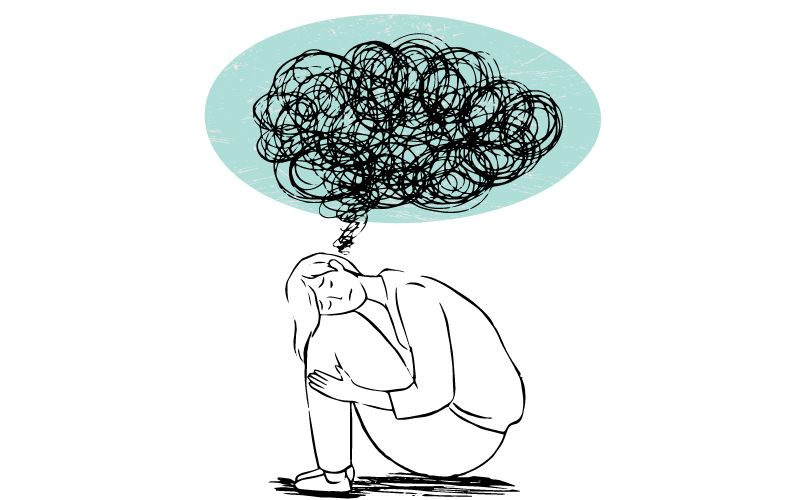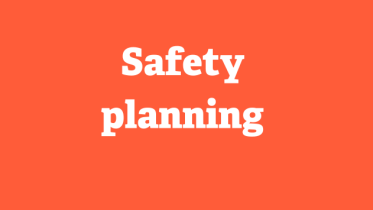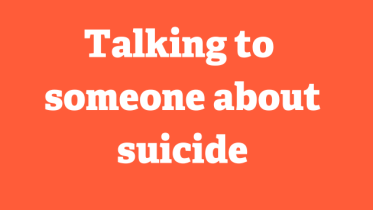Most people who say they’re thinking about suicide will not act on these feelings. However, it’s very important to consider whether someone may be at imminent risk of acting on their thoughts. Things you can do to help find this out include:
- asking them whether they have a plan for suicide;
- looking out for other statements or behaviours that suggest they intend to act;
- looking for signs of extreme agitation, upset or crisis.
The first step is always to help to keep the person safe. How you do that will depend on whether or not you think they’re at immediate risk of harming themselves.
Please note: This guidance is for use in personal or collegiate situations. If you’re approaching someone as part of a job role (e.g. attending a call as a fire and rescue service member), please refer to relevant fire service issued guidance.
Jump to: People at imminent risk | People not at immediate risk | Support services
People at imminent risk of suicide
If someone has attempted or is at imminent risk of suicide, call 999 for immediate support (even if you are not currently with them but have their location) or take them to A&E. If possible, try to not leave the person alone.
If you’re unsure about whether to call 999, call 111 for advice on how best to proceed.
If you’re waiting for emergency services to arrive, there are other things you can do that can help keep the person safe:
- Stay with them – or, if you can’t physically or safely be with them, stay in constant contact, e.g. on the phone, and try to arrange for someone else to join them.
- Talk to them – this can help draw their attention back to the world. You don’t have to talk about their feelings or what’s happening: you can talk to them about anything – the weather, pop culture, or something you’re both interested in.
- Move them to a safe place – if you need to and it’s safe to do so, move the person to a safe location (e.g. away from a high place) and away from any immediate dangers (e.g. sharp objects). You might also want to move sharp objects or large amounts of medication if they are within reach.
It’s okay to offer continued support, for instance through offering to check in with someone or letting them know that they can talk to you.
Next steps
After this more immediate activity, consider one of the many ongoing support and intervention options available. After you have supported someone, remember to also be looking after yourself. Ways to do this are outlined in ‘Sources of Support’.
People not at immediate risk
For people who aren’t an immediate concern, there are several ways you can help keep them safe. Some of these are described under the headings below.
Being there
One of the simplest and most helpful ways to keep someone safe is to have someone else with them (either in person, on the phone or online). If you are supporting someone, try to remember afterwards to also be looking after yourself. Ways to do this are available by clicking on ‘Sources of Support’.
Suggest they talk to their GP or NHS crisis service
Some people may not want to contact their GP, or there may be delays in them getting an appointment. If you can’t wait, or there are delays, health services often provide mental health crisis services that can give 24-hour advice and support. You can find services local to your area at the following links for England, Scotland, Wales, and Northern Ireland.
Activities that may help
Some activities can provide distraction from distressing thoughts or might help someone to feel a little better. These include:
- going for a walk or some other form of exercise;
- listening to music that improves their mood;
- practising calming breathing exercises (e.g. breathe in for 4 seconds, hold your breath for 4 seconds, breathe out for 4 seconds, wait 4 seconds and repeat).
You could also recommend reading this booklet, which was written by Mind and gives suggestions to help people cope with suicidal thoughts.
Call a support service
There are many specific and general support services available for people who are having thoughts of suicide. A variety of options can be found by clicking on ‘Sources of Support’.
Self-help apps on a smartphone
- distrACT – provides techniques and advice on how to avoid self-harm or suicidal thoughts or actions. You can download distrACT app here.
- StayAlive – provides quick access to crisis helplines, support and guidance when a person is thinking about suicide. You can get the StayAlive app here.
Consult their ‘safety plan’, if they already have one.
If the person has a safety plan, perhaps suggest they read through it.
Looking after yourself
It is likely to be a worrying time for you, so it is important that you actively look after yourself, maybe talk to someone or seek your own support. Further ideas and support options are available by clicking on ‘Sources of Support’.




